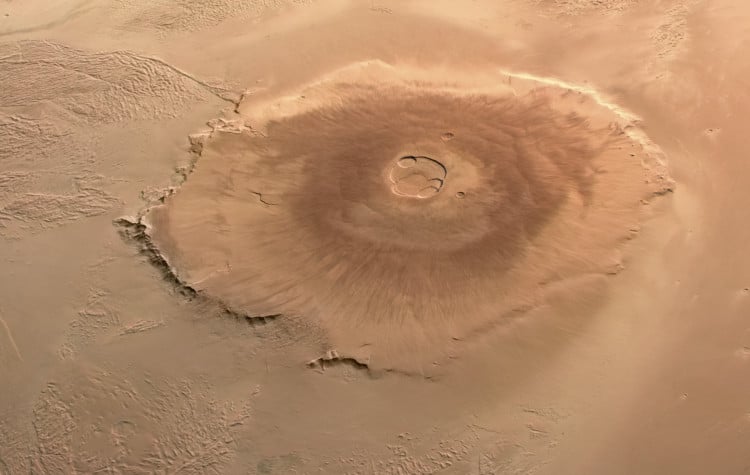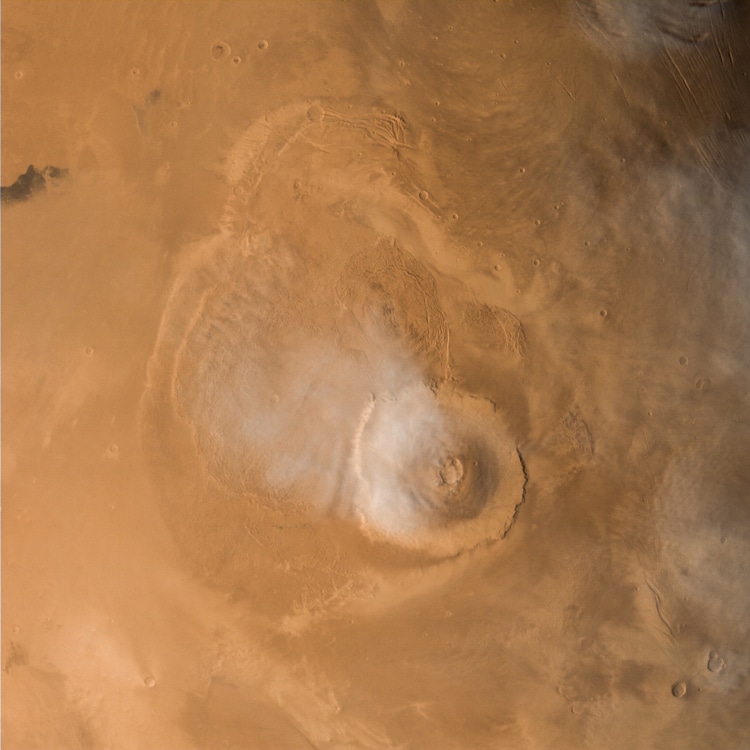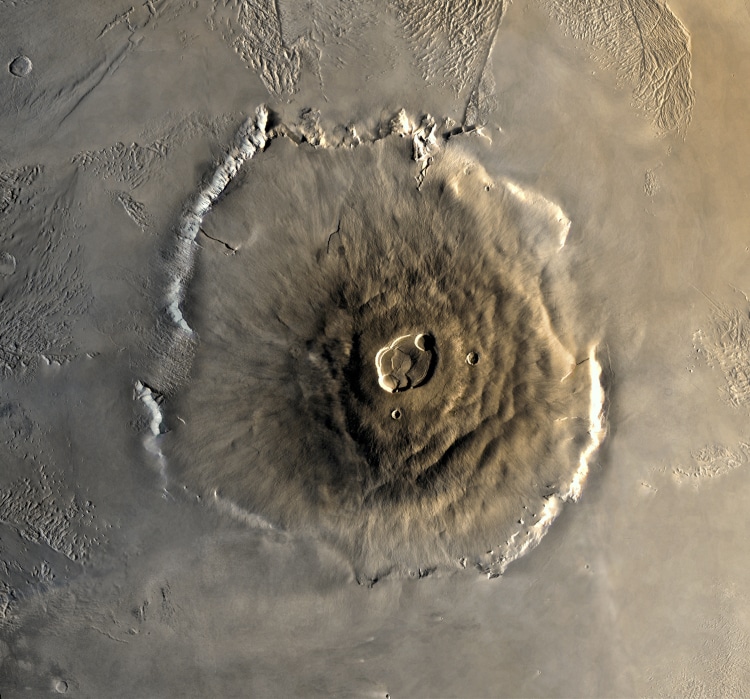In fact, it is so broad, that it doesnt look like a typical mountain found on Earth.
If you were standing on it, it would simply appear like a soft slope.
Located in the Tharsis Montes region near the Martian equator, Olympus Mons is a shield volcano.

Photo: ESA/DLR/FUBerlin/AndreaLuck viaWikimedia Commons(CC BY-SA 3.0 IGO)
Olympus Mons' shape is the result of many thousands of highly fluid, basaltic lava flows.
At its summit, there is a 53-mile diameter crater, or caldera, comprising several mutually intersecting craters.
However, some regions of the mountain may be only a few million years old.

Photo: Kevin M. Gill viaWikimedia Commons(CC BY 2.0)
This indicates a chance that it’s still an active volcano that could erupt at some point.
Olympus Mons' sweeping features are also a testament to the differences between Mars and Earth.
On our planet, plate tectonics spread magma out, which keeps terrestrial volcanoes from growing taller over time.

Photo: Image by NASA, modifications by Seddon viaWikimedia Commons(Public domain)
Meanwhile, Mars is too small for plate tectonics.
This, alongside a lower surface gravity, allowed for the lava on Mars to pile up higher.
Geological evidence found in towering cliffs that ring Olympus Mons have sparked questions about its past.

Photo: Resident Mario viaWikimedia Commons(CC BY-SA 3.0)